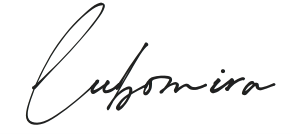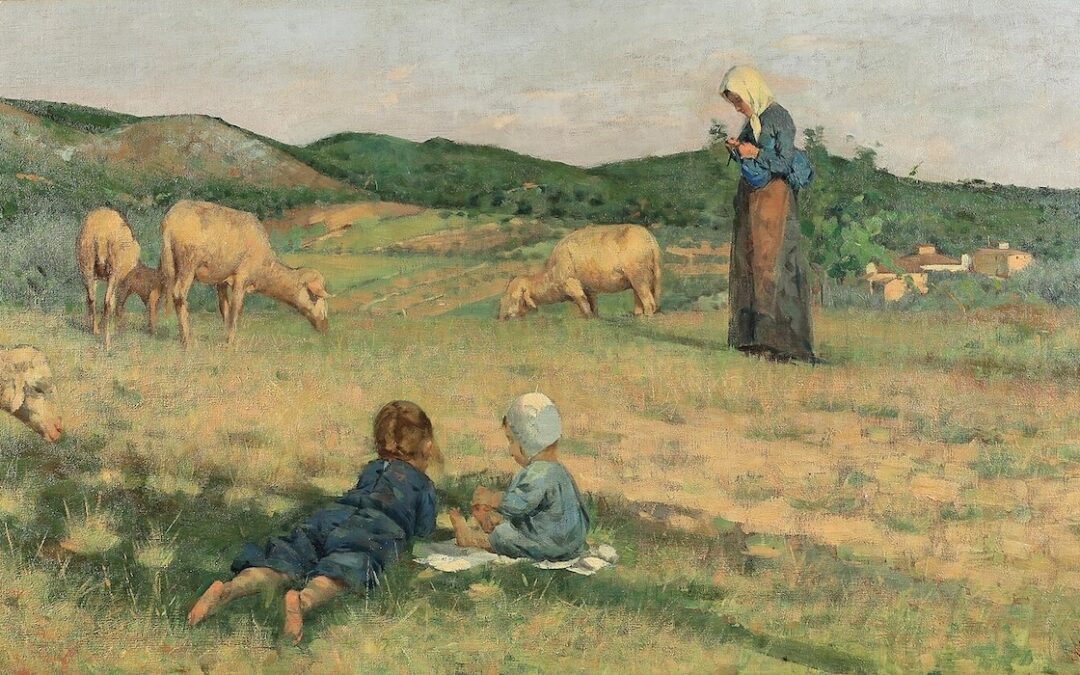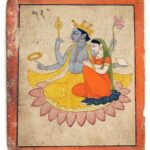Dharma is at the foundation of spiritual astrology and spiritual counselling, because the higher purpose of astrology is allowing us an opporunity for a deepening, self knowledge and alignment to our higher spiritual potential.
The four aims of life, also known as the four dharmas of artha, kama, moksha and dharma, are essentially a way of living a life of balance. If we look at our natal wheel, it is a circle, and each part of it is part of the whole, so to feel the fulfillment and harmony one seeks in their life, one must balance the inner wheel. Each of the houses connects to one of the four dharmas, and to the greater dharma, and today we’ll dive deeper into this understanding. While some houses of our chart may be empty, they are still ruled by a lord who resides somewhere and still affects them; and one inter-relates and inter-connects to all else.
Let’s dive in.
In India, astrology is called divya chakshu, or divine eye, because it seeks to help people see the path ahead. Vedic Astrology is one of the six sacred sciences of India, called Jyotish, or science of celestial light in Sanskrit, and is an important branch of the yoga tradition. As such, the role of astrology isn’t to predict your future, it is to help and guide people towards their dharmic paths and the co-creation of their destiny; astrology is, at its essence, a spiritual practice and spiritual guidance for your self knowledge and soul growth.
The way of dharma of subtle and multi-layered. It cannot be reduced to a mere formula or routine; it is a continuous shaping and adaptation to every movement of life at every moment. There is a famous Sanskrit statement from the Mahabharata that states that “dharma protects those who protect dharma.“ If we do not follow the way of dharma, our lives can easily fall in imbalance, disharmony, ignorance and inner separation.
The four aims of life
The four aims of human life, also known as puruṣārthas in Vedic philosophy are dharma, artha, kama and moksha. These four are also called the four dharmas, as each is held within the hand of the great dharma; so sometimes in older texts you may have come across them as moksha dharma, artha dharma and kama dharma.
To understand puruṣārthas more deeply, purusha loosely translates to “soul” or that within us, our essence, who never changes, who isn’t born nor ever ceases to exist, and belongs entirely to the oneness, call it god or universe. Artha means “the ability” or “for the purpose of”, and as such, taken together, puruṣārthas means “for the purpose of the soul; which is why balancing these four allow us to lead a life of greater purpose and inner fulfillment.
Essentially, the four aims of life are a way of living a life of balance.
Artha is about prosperity, wealth and the material; and it is about the values and goals that nurture and sustain and promote our way of balanced life;
Kama is about desire, and finding joy and pleasure in that which we do based upon our dharma;
Moksha is about spiritual liberation, and essentially, it is about gaining the freedom of consciousness; and
Dharma is about living in the higher order and virtue, aligned to the higher path and moral and ethical values; it is about living according to our inner purpose.
In Vedic astrology, the dharma houses are 1st, 5th and 9th; the kama houses are 3rd, 7th and 11th; the artha houses are 2nd, 6th and 10th, and the moksha houses are 4th, 8th and 12th. And yet dharma isn’t just seen through the 1st, 5th and 9th, or their rulers and nakshatras, nor is it only analyzed through the Navamsa chart – dharma is something that is integral and must be a foundation to all – and it exists within all the four aims of life; so let’s begin with the dharma houses.
Dharma houses: 1st, 5th and 9th
Dharma is a big word, but essentially, it is about a right living of life – which is about virtue, integrity, truth, and a higher ethical code and spiritual moral compass and values we align ourselves and our actions to. It is about living according to our inner purpose, our higher purpose, and being true to our authentic self while still aligned to higher virtues and in the humility of god.
Naturally, on the natal wheel it begins with us being born: the 1st house, our Ascendant, the portal through which we are born and a soul becomes into a body, human skin and human heart. The Ascendant is known as our path of life, and it is our body that is moved forward – by the pure desires of our heart, which then takes us to meeting the otherness of the 7th.
Because the 1st house connects to us physically and it is also our path of life, also showing the path upon which we’ll walk to complete our soul’s desire and purpose, this must be a dharmic path if we walk to live such a life – so the 1st house is the first dharma house, because essentially, it all starts with us. We are the ones that need to embody the virtues and the rightful action of living – dharma is something to be embodied, not just spoken of. And along the way, we’ll have choices to make, and it is only up to us what kind of choices we’ll make, and the kind of person we’ll choose to be.
The 5th house sometimes refers to past life karmic rewards and fruits; but it is also connected to intelligence, joy and playfulness, and the creative expression of our heart’s pure desire. The language of our heart is joy, and through the 5th house we give our love and joy expression to the external world. It is a dharmic house because its creation relates to the tangible and outward expression, yet driven by the pure heart that serves only of love and desire to contribute.
The 9th house is called the house of god in ancient traditional astrology – so this is the dharma house in all its greatest light. It sits high in our celestial sky at the time of our birth, and is there to guide us – it is that towards which we reach with our open hands, open heart and aspire to be and embody as virtues in life and rightful living.
It asks us to have a certain sense of humility knowing our right proportions within the vastness of our world, while continuing to expand, learn and explore – reaching our hands across the lines that separate us as humanity, the inner borders of beliefs and conditions and the outer physical borders of countries and cultures; we reach across the lines that separate us, and hopefully, dissolve the boundaries between us. The intention remains to devote to a greater cause, wider horizon, keeping values and integrity high, connected to a purpose of deeper meaning and contribution.
I often find that the artha houses are actually quite misunderstood; people almost always talk exclusively about the material possessions and finances, but that’s not really all it is, and these too are of higher dharmic purpose.
As you notice, all the three artha houses are connected to the earth element: Taurus is the 2nd, Virgo is the 6th and Capricorn is the 10th. Earth is about our nature, soil – what we grow and sustain within us as values, and what we have as our external physical world in order to then sustain and nourish ourselves to complete our dharma. So the artha houses, particularly the 2nd, is very important – because this is about our values and the initial foundation within us of which we’ll move and create ahead.
The 2nd house is crucial for our right balanced living – because this is where self worth, self esteem, confidence and our values reside. It is also a healing house, as it rules all movements that sustain our body, such as food intake and also exercise – and also, the way we feel about ourselves, self talk and our self care. Once we have our body in the 1st – we now need to take care of it and sustain it in health.
In the 6th house we learn discipline and responsibility, which is why it is before the 7th house of relationships, because without being responsible, self accountable and disciplined and self controlled, we can’t have healthy long lasting relationships. This house is also about the physical devotion of taking care of others and the land, in order to have harvest and then feed other people. It is a very physical house with our hands in the soil, whether gardening or feeding animals or cooking or being a nurse and caretaker and homemaker; and this reminds us that artha is essential dharma even when it comes in different forms.
You see, for a writer artha is the pen and paper; for a monk artha is the time and space for their spiritual practice. Without the material world, in whatever shape and form because time and space too are material, we can’t do anything for anyone else. If we don’t feed ourselves, we can’t show up for another; if we don’t take care of our selves, we can’t take care of another. Essentially, artha is all that which helps you achieve your purpose.
Financial prosperity is of course a part of that also; because money gives you the opportunity to do even more things and expand your work, and help other people in greater ways. When we don’t respect money, we don’t respect the divine; because the divine is the creator of everything, including the material. Furthermore, you need to respect your talents, skills and time and energy you invest and give to others, and ask to be recognized and compensated fairly.
The 10th house shows us the making of, building of and climbing of the stairs – brick by brick – as our material legacy we leave behind. By now, after the walk through the other houses, as it follows the dharmic 9th, it isn’t just about something physical or material we have built, it is something that can be wisdom that we have contributed to others and this now lead them to reach higher grounds through the staircase we build with our own two hands.
Artha can be the knowledge, the time, the understanding and study we gain in life to reach our higher goals and vision and dharma; and many philosophers put artha as first on their dharma lists, because without the pen we can’t be writers – it is not just about the ideas roaming the skies, we need to get things shaped in tangible ways. Love too is something that needs to be embodied in our every day; because love isn’t like air, it is bread, that needs to be made and remade each morning, each day.
Kama is desire, and without desire we don’t move anywhere. Kama is that which moves us, pulls us towards unknown horizons and gives us the direction and fire to move ourselves and follow the desires of our heart. Desire, and I mean real true desire of heart, is the language of our higher self towards where we should go next; it is a guidance system.
The 3rd house shows the desire we have of ourselves – which is about our desire to feel purposeful; to apply our talents, gifts and skills and make something tangible with them being of contribution to others. The 3rd house rules our creative talents, skillfulness and resourcefulness, and it shows the courage of our soul.
The 3rd house is actually the only real free will house of our chart – because free will is in correlation to self awareness and our actual actions, which the 3rd house rules because it rules courage of soul to be self aware and do the work; it rules our hands and craftsmanship i.e. making something tangible and walking the walk; and in esoteric texts was called the moon temple of the priestesses and mystery schools, so this house is about channeling, intuition and initiation. People with strong 3rd houses are incredibly talented and can make any dream come true.
And it is precisely this soul connection, through their courage and willpower, that drives them forward with desire to be the best they can be and achieve all they want and desire. One of the greatest desire of human beings is that they desire to be the best version of themselves and feel like they are able to do something; feeling unneeded and incapable are incredibly damaging to a human.
And then comes the desire for another. The 7th house is the otherness – it is the desire that pulls our body towards another person to love, be loved, unite with, merge and feel seen by. The 7th house is our mirror and it is that through which we can come into inner marriage and acceptance. And of course, to be held and seen and heard is what all human beings desire.
Desire for pleasure is what drives all human behaviour, so kama houses are important for our balance; and yet it isn’t necessarily skin and senses that we desire, kama dharma rules the desire and pleasure we feel towards our dharma and higher purpose. As I mentioned, true desire is the language of our soul guiding us towards where we need to go for our higher purpose; and it is also our true joy and pleasure and excitement that gives us hints on the kind of work we should be doing – because your higher purpose will make you feel passionate for it, it’s not just work, it is absolute passion you may feel for it.
Excessive kama of course isn’t great, as it leads us into greed, sloth, over-indulgence, addictions – and these are paths taking us off our right path in life. This is why kama is about balance, and it’s not about not eating chocolate ever, neither suppressing true desires, it is just about not over-indulging and being mindful of your subconscious intentions, as well as being self honest.
The third kama house is the 11th house – and now the desire is about recognition and bigger society interactions; it is about desiring to make a change of positive impact in the world, humanitarian work and philanthropy, and also, being recognized for your work. The 11th house sometimes relates to financial rewards and big gains for the hard work done; it rules important networks and connections to high society and influential people – but the deeper meaning of it is that it helps you achieve your dharma and reach farther and further – it helps you expand and reach more people and make a bigger difference in the world through your creations and passions.
Moksha dharma: 4th, 8th and 12th
The 4th, 8th and 12th house are the traditionally water ruled houses; so here we see moksha as that which liberates us – it moves us and frees us as we become more self aware and conscious. This is what moksha essentially is: spiritual liberation; and what that means is gaining our freedom as we become more conscious. The only way to do that is to dive deep into our inner seas and oceans; unfreeze the frozen, melt the waters for flow and riverlife, and surrender to that whose waves we’ll never fully know because some things we’ll never know in this life – and this is how faith and trust are developed, which are the core foundations of the true spiritual person.
In the 4th house we see the beginning – the home of our heart, the first beat when we begin to breathe and be alive, our sacred most deepest self, our deepest emotional world and all that makes us feel comforted in the world; whatever it is, it is what we name “home” and home equals “love”; so in this house we learn what love is, how to love and how to nurture. The 4th house rules the first chamber of our heart, which receives blood, i.e. we receive life, so this house holds within itself our everything, our beginning and our return to all elements. This house is the key to our happiness, and what we perceive as our core within; it is the house that holds the key to our know thyself. To understand our self you must always start with the beginning, our roots, your childhood – this is the beginning of the river flow that is your self awareness journey towards your moksha.
The 8th house is ruled by Scorpio, which is fixed water i.e. ice. This is where we ice things out, and in order to reach spiritual liberation we need to dive deeper in our subconscious and have the courage to be really honest with ourselves. This house has no foundations because it is meant to shake us up if we continue to resist knowing ourselves. We are meant to warm ourselves, melt the ice, and free ourselves in the flow again. There is a lot of inner world in this house, so we become inner psychologists here, inner investigators and search for the truth, with courage and willpower. On a higher level, in the 8th house is where we learn trust.
And then comes the oceans of the unconscious in the 12th house traditionally associated with Pisces. You see, if in the 8th we learned to trust ourselves and be brave enough to make the subconscious conscious, or at least try to be more self aware, in the 12th house we can’t really suddenly make something visible to ourselves – because it is the unconscious. The 12th house is where all goes to disappear. This is why it rules some suppression, illusions, delusions, addictions, self deception etc. It can be really easy to get stuck here because this house is at the back of our head – and we can’t see it, we don’t have eyes there. But the more things we leave unaddressed, hidden, unhealed, unacknowledged, suppressed, then the more things we’ll do to continue to validate these, lie to ourselves and keep ourselves stuck.
Moksha is about letting go of the wheel of karma – opening our hands and unholding from the wheel; and the only way to do that are grace, forgiveness, inner work and the spiritual higher virtues embodied through a rightful living. The only way we free ourselves is by being more conscious and making better choices through our dharma.
The 12th house is an ocean with waves, and some waves will be very big, so big that we wouldn’t even know we are on a wave or at sea or perhaps on the tail of the whale. This house rules distant foreign places, monasteries, ashrams, spiritual practices such as prayer and meditation – and it’s about dissolution and the unbounded places. It’s about the “I don’t know”, the surrender, the humility and the detachments.
Moksha is that which liberates you from attachments through self awareness and the pursuit of higher spiritual knowledge through dharma. Moksha is the open palms towards your god, the prayers of the monks and your body when the waves take you and hold you and when you realize that you don’t have to be afraid of swimming in the rain with the big waves; because your body suddenly relaxes and trusts, and your mind too is relaxed, and you are filled with the freedom of joy of swimming in the rain, and you realize how in your relaxed body now the waves hold you; and how even though you never learned to swim, suddenly there you are – swimming – your legs and hands moving as if you’ve always known how to swim, because you let go and now the waves are helping you, because you trust the flow, and now the sea holds you. We let go to let in. That’s freedom.
For personal readings with me, you are welcome to browse through my Offerings.

For more of my writings, browse through my Art of Love.
If you wish to support me and my work, you may do so by sharing it or donate here. For personal readings with me, you may visit my Offerings.
Your support means so much to me! Thank you wholeheartedly!
Cover art: Peace in the fields, 1888, by Niccolò Cannicci.




